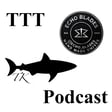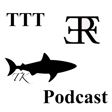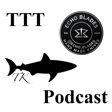
E22: Baker in the house!!
Rub a dub dub, three men in a tub... no just kidding, what kind of podcast do you think this is?! We do have The Baker today though! Come hear all about what the boys at Baker Forge and Tool are up to! Listen up, or else!
We'd love to hear from you so send in questions to the show Instagram: @the.tttpodcast
Baker Forge and Tool:
Website: https://www.bakerforge.com/
IG: @bakerforgeandtool
Your hosts:
Denis Tyrell of Tyrell Knifeworks:
IG: @tyrellknifeworks
YouTube: https://www.youtube.com/c/TyrellKnifeworks
Website: https://www.tyrellknifeworks.com
Facebook: https://www.facebook.com/people/Tyrell-Knifeworks/61558767232017/
Jerid Sandoval of Echo Blades:
IG: @echo_blades
Facebook: https://www.facebook.com/people/Echo-Blades/100085394408004/
Maker's Spotlight:
https://www.instagram.com/stricklandknives
https://www.instagram.com/roccohandmade
Our sponsors:
Two Basterds Tx Smithy & Supplies: @twobasterdshammers
Maritime Knife Supply: http://maritimeknifesupply.com
Pelican Paste: https://pelicanpaste.com (Use TTT10 for 10% off!)
Baker Forge and Tool: https://www.bakerforge.com (Use TTT10 for 10% off!)
Podcasts we love:
- Work For It
- Fire and Steel
- Hustle and Grind
- KnifeTalk
- FullBlast
- ForgeSideChat
- Artisans of Steel
- Can you hear the Eko



